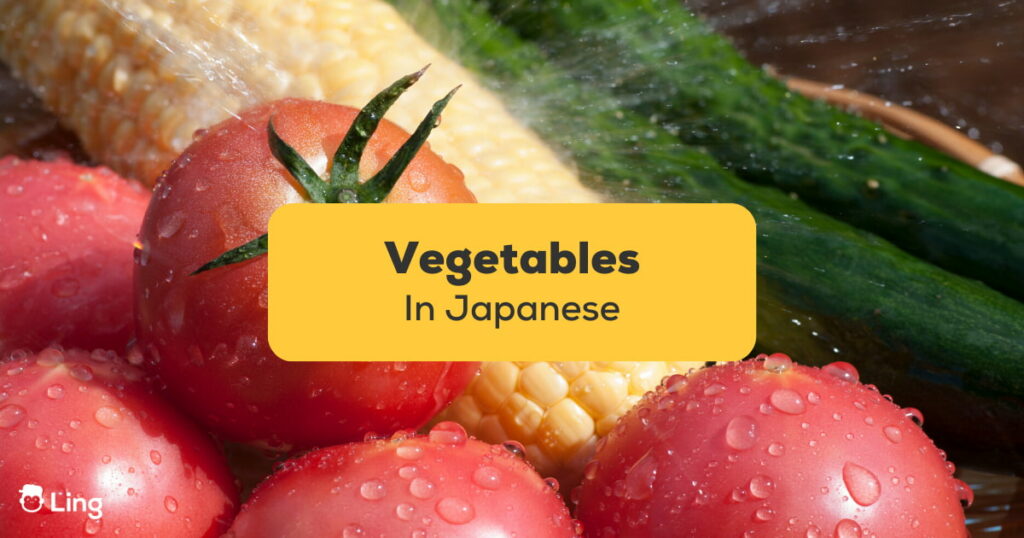As you may already know, most Japanese dishes contain a variety of vegetables since they are a must-have food ingredient in Japanese cuisine. If you’re currently in Japan and want to go to a Japanese market to buy some vegetables to cook Japanese food at home, do you know the names of the vegetables in Japanese? If the answer is no, don’t worry because we’re here to help you out!
In this post, you will not only learn Japanese but about various Japanese vegetables that are native to Japan as well as other regular vegetable names. So, let’s get started!
What Is The Kanji For Vegetables In Japanese?
First of all, you might be wondering what is the equivalent of vegetables in Japanese. 野菜 (やさい – yasai) means vegetable(s). If you are not confident enough to write in Kanji, don’t hesitate to write its hiragana form.
What Are The Most Common Vegetables In Japan?
The most commonly used vegetables in Japanese are shiso, wasabi root, maitake mushrooms, shishito peppers, nameko, nagaimo, myoga, mitsuba, and daikon.
It’s almost unlikely to see a Japanese dish that doesn’t contain one of these vegetables. They are native to Japan and grow naturally all over the country, making them a staple ingredient in many Japanese meals.
In case you aren’t familiar with these vegetables, let’s go over them one by one!
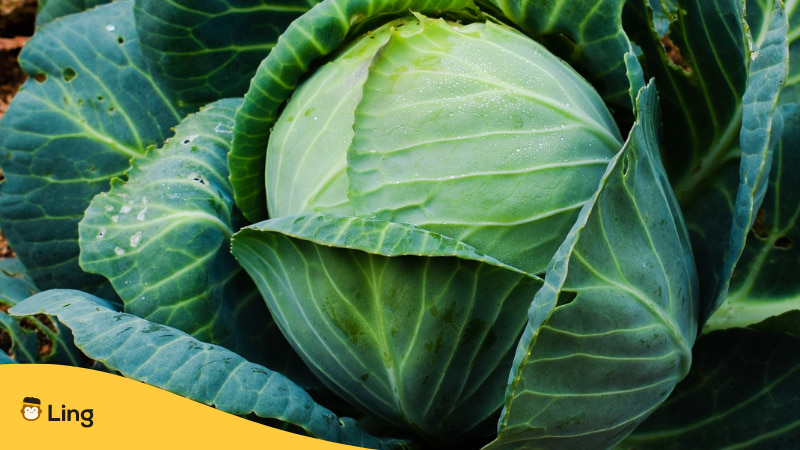
キャベツ (Kyabetsu) – Cabbage
You may not know this, but Japan is one of the top cabbage producers in the world, and cabbage is the most frequently bought vegetable in the Japanese market!
Cabbage is a versatile vegetable used in many dishes to add nutrition and flavor. It is often sliced into thin strips and served with Japanese fried dishes, such as okonomiyaki.
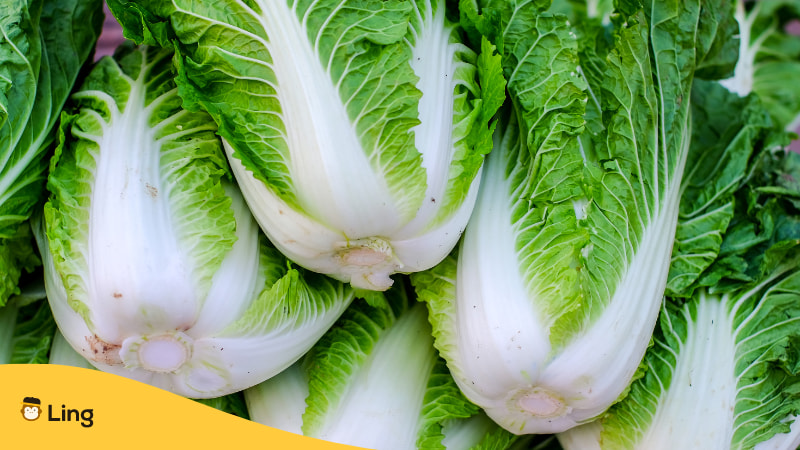
白菜 (Hakusai) – Chinese Cabbage
Hakusai, also referred to as napa cabbage, is grown in many regions of Asia such as Japan, Korea, and China. This vegetable is commonly used in a Japanese dish called hakusai no sokusekizuke.
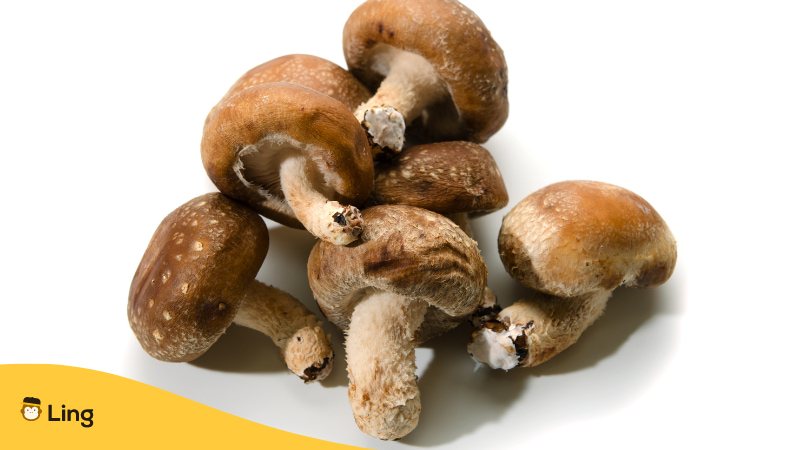
椎茸 (Shiitake) – Shiitake Mushroom
Shiitake mushroom is an edible mushroom native to Japan. They can range in length from 5-10 cm and their caps are thick and full of umami. These mushrooms can be eaten both fresh and dried.
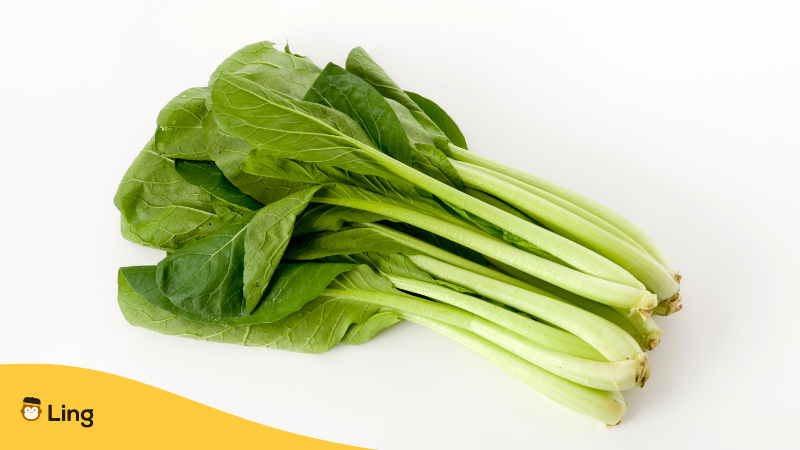
小松菜 (Komatsuna) – Japanese Mustard Spinach
Japanese mustard spinach is mostly grown in Japan. It is very similar to regular spinach in terms of nutrients and vitamins, but it has a softer taste. This vegetable is usually eaten raw in salads or served in soups and stews.

紫蘇 (Shiso) – Perilla Leaf
Perilla leaf is a minty herb and is a commonly used ingredient in Japanese cooking. It has two varieties – aojiso and akajiso. Aojiso means green shiso which is often served with sashimi. Akajiso means red shiso and it is often used to add more color to dishes.
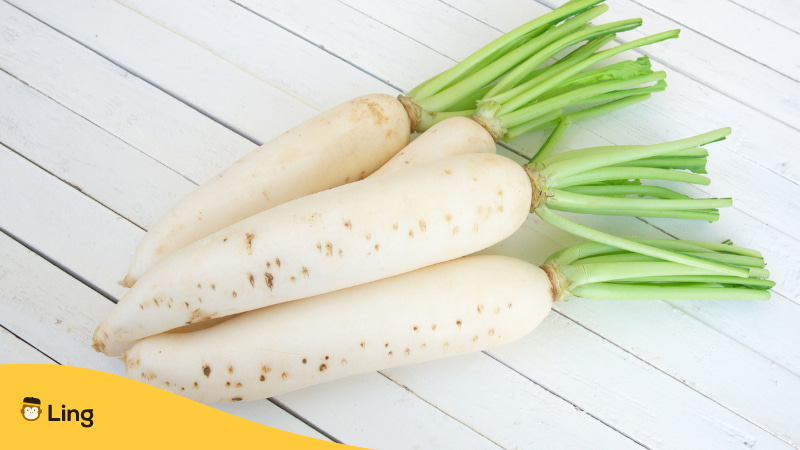
大根 (Daikon) – Giant White Radish
Daikon is a popular ingredient in Japanese cuisine that can be eaten both raw or cooked. This white radish is typically used to counteract the oiliness of grilled dishes such as tempura. The bottom part of the daikon tends to taste rather bitter, but you can always cook it to make the taste slightly sweeter.
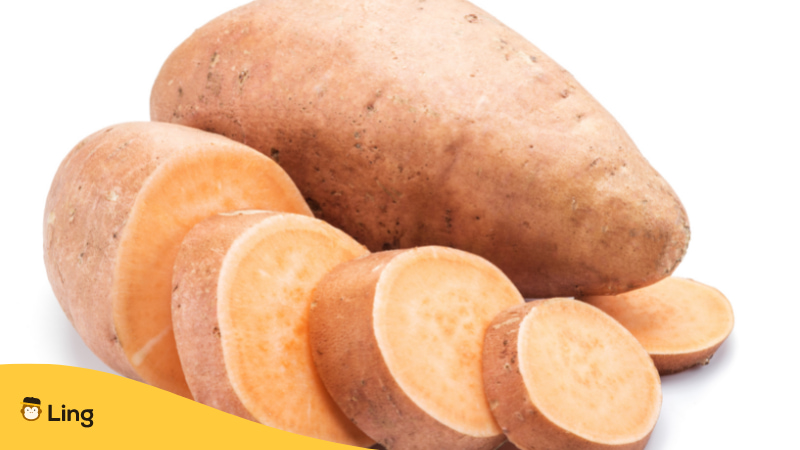
サツマイモ (Satsumaimo) – Sweet Potato
The sweet potato is naturally grown in Kagoshima and is a popular winter vegetable in Japan. Satsumaimo is usually grilled or eaten plain in a Japanese snack named yaki-imo.
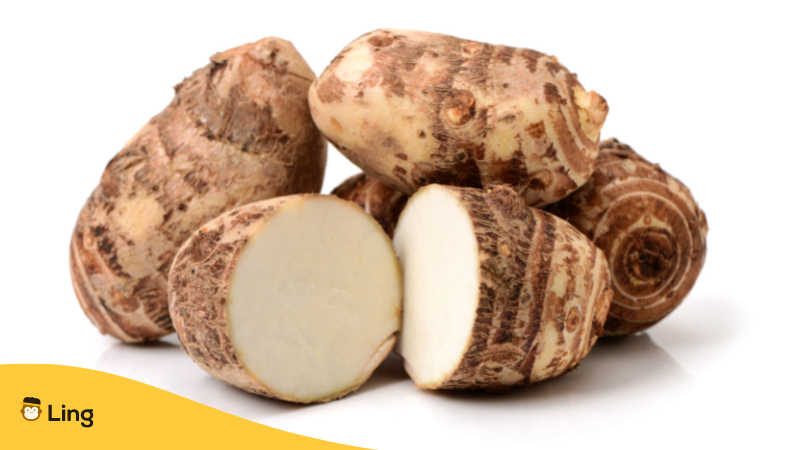
里芋 (Satoimo) – Taro Root
Taro root grows all over Asia, specifically in China, Korea, and Japan. It is a root vegetable known for its sticky texture. Remember to always cook taro root before eating it! You can often find this vegetable in Japanese hot pot dishes and miso soup.
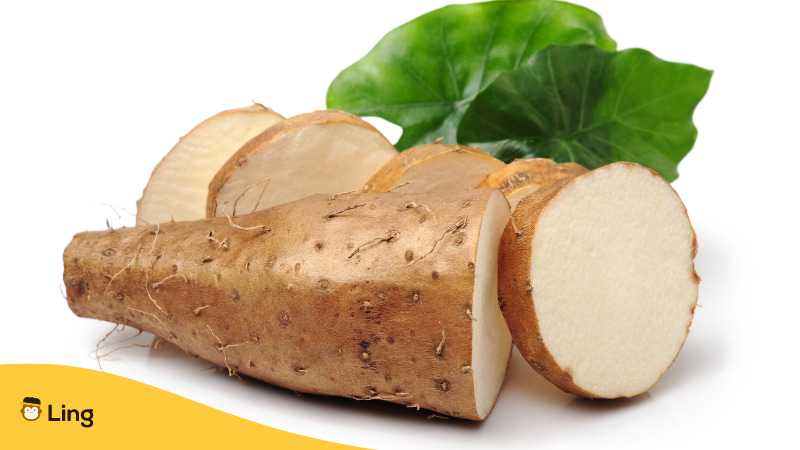
長芋 (Nagaimo) – Japanese Yam
The Chinese yam comes in two varieties: yamaimo and nagaimo. Even though they are slightly different in taste and shape, they can be eaten either grilled or raw. Raw nagaimo can be used to make a creamy paste called tororo.
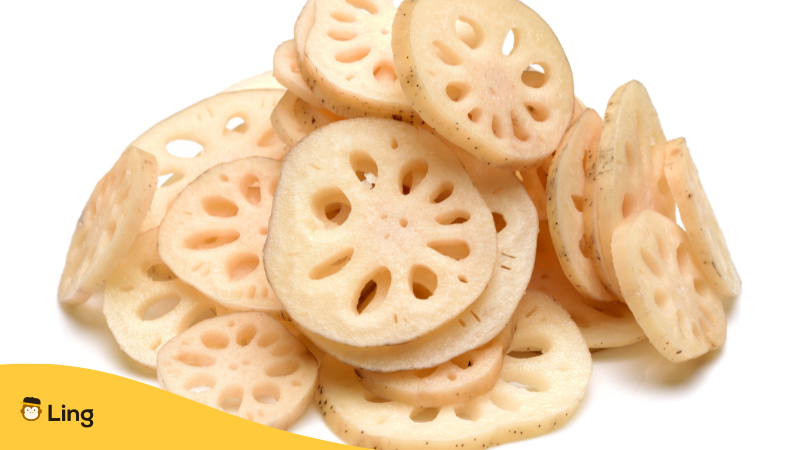
蓮根 (Renkon) – Lotus Root
Renkon is a common plant in Asia that’s usually peeled and boiled in water before eating. You can use this lotus root in tempura, chikuzenni, and various salads. It is important to serve this vegetable peeled and sliced to show off its amazing pattern.
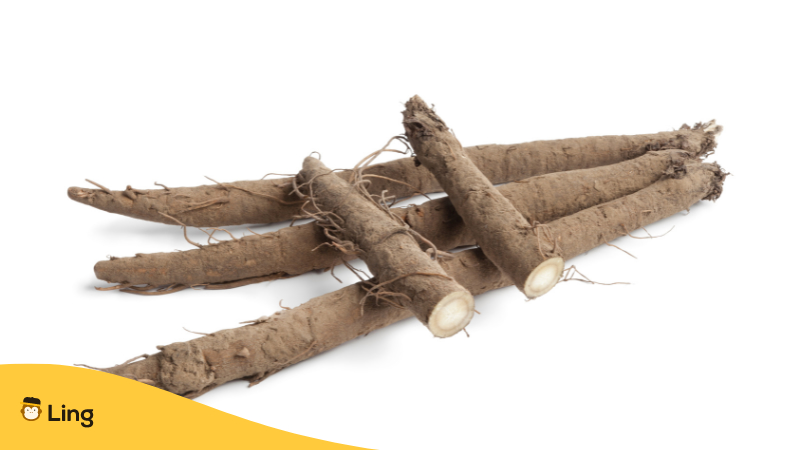
牛蒡 (Gobou) – Burdock Root
Burdock plants exist all over the world, but they are mostly used for consumption in Asia, more specifically Japan. Gobou can grow 1-2 meters in length and must be cut and cooked before being eaten. The most popular gobou dish is kinpira gobou.
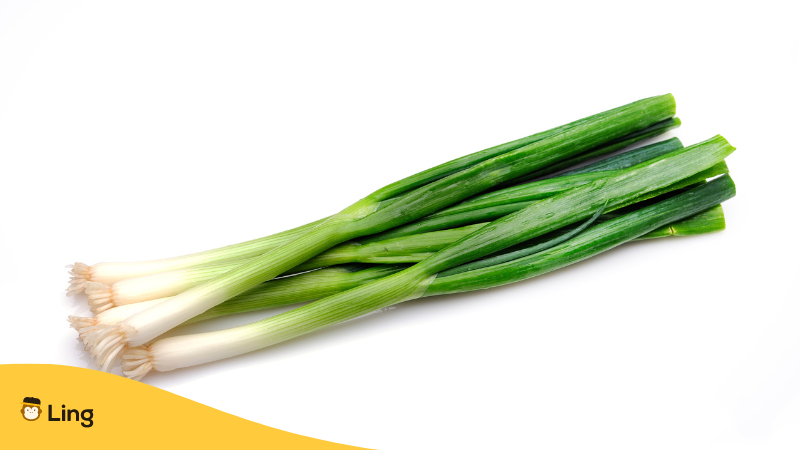
葱 (Negi) – Green Onion
Green onion is added to many fried and boiled dishes or used as a topping in dishes such as domburi and gyudon. There are as many different kinds of green onion in Japan, but the two most common types are Kanto and the Kansai negis.
ピーマン (Piman) – Green Pepper
The name piman comes from the French word for pepper. The Japanese piman is relatively smaller than the bell pepper and has a sweeter taste. This vegetable can be used in deep-fried dishes, such as tempura, or used raw in salads.

オクラ (okura) – Okra
Okura is a summer vegetable that is usually eaten raw in salads. Okura has a sticky layer that surrounds its seeds, but this should disappear after you cook or boil the okura.
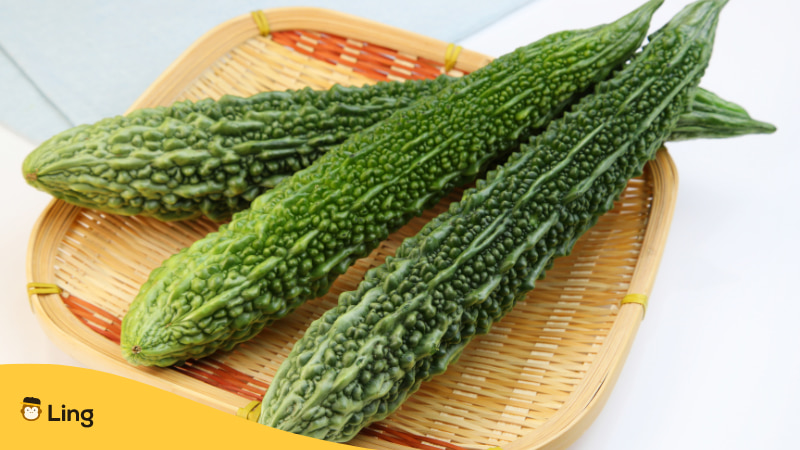
ゴーヤ (Goya) – Bitter Melon
Even though goya is well known for its bitter taste, it is the most popular vegetable in Okinawan cuisine in Japan. The key ingredient in goya champuru, Okinawa’s signature dish, is goya mixed together with tofu and eggs.
Japanese Vocabulary About Vegetables
Are you ready to impress your Japanese friends with your cooking? Show them both your cooking and Japanese language proficiency! Here’s a list of Japanese vegetables that you should try memorizing today.
Whew! That’s a long list! But you should insert these words in your sentences and create a daily Japanese practice with friends. So, do you want to learn more Japanese? Find out how below!

Learn More Japanese With The Ling App!
If you are interested in learning Japanese, or another language altogether, then you will absolutely love the Ling app! The Ling app is a language learning app designed to help you learn a new language as effectively as possible and at your own pace.
With so many engaging activities to choose from, such as writing and listening exercises, mini-games, quick quizzes, and an AI chatbot, the Ling app is an all-in-one language learning resource. You can find everything you need in this app to master 4 language skills. Even better, you can try the app out for free today by downloading it from the App Store or Play Store.
What are you waiting for? Start learning Japanese now with the Ling app!
